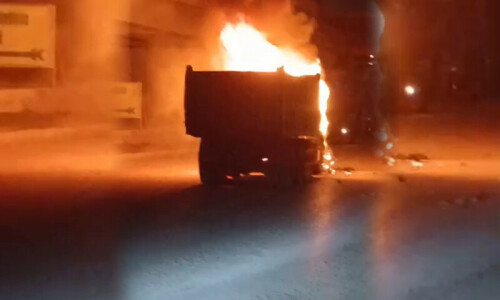MURREE, Jan 24: Murree even today, after 65 years of independence, if one looks at the churches and educational facilities dotting the landscape, reminds visitors of an old English town.
When the British took control of Punjab, Hazara and Kashmir, it laid the foundation of Murree, building churches, chapels, residential quarters, military cantonments and schools.
Before the British, the area comprising Murree was called Mussiarri and the land was owned by a local Dhoondh (Abbasi) tribe.
With the passage of time, many myths have evolved around the history of Murree.
Strangely, some local pseudo-historians claim that the grave of Marry is at Pindi Point and that is why the British had chosen the place for their residence. The claim has no connection with reality but the myth seems to have some connection with earlier British interest to build churches in Murree.
Churches Three churches and two chapels in Murree are great monuments of the British era in the Sub-continent.
The construction of the Holy Trinity Church on Mall Road started in 1850 and after its completion in 1857, the first religious service was performed in the city. Many British Viceroys of India, offered prayers at this church.
Even Queen Elizabeth when she visited Pakistan, in 1999, participated in a prayer service at this church. Even today churches remain a popular pit stop in Murree for diplomats visiting from Islamabad.
The trinity church has a seating capacity of 400 people. The church is under the Bishop of Lahore, who runs its administration and appoints the priest at the church.
Although, according to the local priest in the church, the Christian population in Murree is declining.
Cantonments Besides churches, the British also built military cantonments alongside residential quarters, making it clear that they were, first and foremost, colonisers.
However as luck would have it, the military cantonment in Murree, after the creation of Pakistan was taken over by the Pakistan Army and the Lower Topa Cantonment went to the Pakistan Air Force.
Schools But there were also schools and educational facilities built by the British. Initially the schools were meant only for the English but eventually locals were allowed admission and today they are fully run and managed by Pakistanis. In a way, by default, the British also laid the foundation of modern education system in Pakistan.
English weather Then there is also the weather factor that even today makes the hill station attractive for tourists.
Intriguingly, a fact often overlooked, Murree’s weather was similar England and the cottages and colonies that the British built in the hill station resembled the Island nation’s architecture.
At the end of the day, the English might have been colonisers but they were also homesick migrants. The yearning for ‘home’ is all too visible when one studies the English architecture in Murree.










































